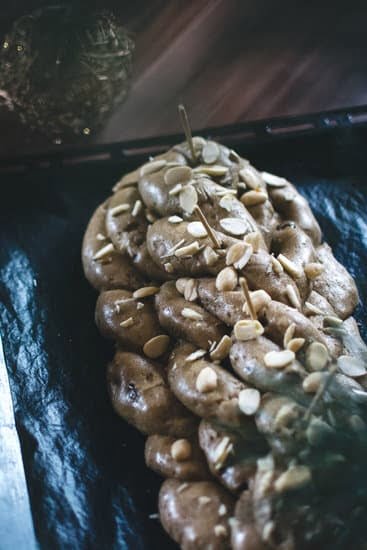Freezing fondant decorated cakes may sound like a daunting task, but it can actually be a game-changer when it comes to preserving the beauty and taste of your masterpiece. Fondant, a smooth icing made from sugar and water, adds an extra layer of elegance and creativity to any cake design. However, fondant can be delicate and perishable, making freezing an essential technique for ensuring its longevity.
In this article, we will delve into the world of freezing fondant decorated cakes. We will explore what fondant is and how it contributes to the overall design of a cake. Furthermore, we will discuss why someone would want to freeze a fondant cake in the first place.
Preparing a fondant cake before freezing is crucial, as improper techniques can lead to unwanted results. That’s why we will provide you with best practices for preparing your cake before freezing. Additionally, we will guide you step-by-step on how to properly freeze your fondant decorated cake so that it stays fresh and beautiful for future celebrations.
Storing frozen fondant cakes requires special attention to detail in order to maintain their optimal taste and presentation upon thawing. Therefore, we will offer tips on how to store your frozen cakes effectively.
With the importance of thawing techniques in mind, this article wouldn’t be complete without addressing how to thaw a frozen fondant cake without compromising its quality. Common mistakes that should be avoided when freezing fondant decorated cakes will also be discussed.
Lastly, we have reached out to professional bakers who generously shared their insights and advice on freezing and thawing fondant cakes. Their expert knowledge can help you navigate through any challenges that may arise during the process.
So whether you’re a novice or experienced baker looking for ways to extend the life of your stunning creations or simply wanting to plan ahead for special occasions, this article has got you covered. Get ready for comprehensive guidance on freezing fondant decorated cakes that ensures both ease and success, while maintaining the taste and presentation that will impress even the most discerning cake connoisseur.
What is fondant and how does it contribute to the overall design of a cake?
Fondant is a smooth, pliable icing that is often used to decorate cakes. It is made from sugar, water, and other ingredients, and has a dough-like consistency. Fondant is rolled out and placed over a cake to create a sleek and polished appearance. It can also be molded into various shapes and designs to add intricate details to the cake.
One of the main advantages of using fondant to decorate a cake is its ability to provide a flawless finish. The smooth texture of fondant gives cakes a professional look and allows for clean lines and sharp edges. It also provides the perfect canvas for intricate patterns and designs. Fondant can be tinted with food coloring to achieve any desired color, making it versatile for creating unique and customized cakes.
Furthermore, fondant acts as a protective layer for the cake underneath. It seals in moisture, helping the cake stay fresh for longer periods of time. This means that not only does fondant contribute to the visual appeal of a cake, but it also helps preserve its taste and texture.
Why would someone want to freeze a fondant decorated cake?
Freezing a fondant decorated cake can be a practical solution in several situations. One common reason is for convenience and time management. By freezing a cake ahead of time, it allows the decorator or baker to prepare and decorate the cake in advance, avoiding last-minute stress and ensuring that the final product looks its best.
Another reason someone may choose to freeze a fondant decorated cake is for preservation purposes. Fondant cakes are often crafted with intricate designs and delicate decorations that can easily be damaged or ruined if not stored properly. Freezing the cake helps to maintain its shape, texture, and overall presentation until it is ready to be served.
Furthermore, freezing a fondant decorated cake can also help with transportation. Whether it’s for special events such as weddings or birthdays, freezing the cake allows for easier handling during travel without worrying about any damage occurring during transportation.
When considering freezing a fondant decorated cake, it is essential to take certain precautions to ensure optimal taste and quality upon thawing. Properly preparing the cake before freezing is crucial. This includes ensuring that the frosting or buttercream under the fondant is fully set and dry, as excess moisture can lead to issues when thawing. Additionally, protecting any delicate decorations or structures by covering them securely before placing the cake in the freezer will help maintain its original state.
In summary, there are several reasons why someone would want to freeze a fondant decorated cake: convenience in preparation, preservation of its design and decoration, and ease of transportation. However, taking proper steps before freezing is essential to ensure that the cake maintains its taste and presentation when thawed. By understanding why freezing may be beneficial and following best practices, individuals can successfully freeze their fondant decorated cakes without compromising their quality.
| Benefits | Reasons |
|---|---|
| Convenience | Preparation in advance, avoiding last-minute stress |
| Preservation | Maintaining shape, texture, and presentation of delicate decorations |
| Transportation | Easier handling during travel without damage |
Best practices for preparing a fondant cake before freezing
Before freezing a fondant decorated cake, it is important to follow certain best practices to ensure that the cake maintains its shape, taste, and overall quality. Preparing the cake properly before freezing can help prevent any potential issues that may arise during the freezing and thawing process.
One of the first steps in preparing a fondant cake for freezing is to ensure that it is completely cooled. Allowing the cake to cool at room temperature for at least a few hours before freezing will help prevent condensation from forming on the surface of the cake during the freezing process.
Once the cake has cooled, it is recommended to apply a thin layer of buttercream icing over the entire surface of the cake before adding the fondant. This layer acts as a barrier between the cake and the fondant, helping to maintain moisture and prevent any potential drying out after thawing.
Additionally, it is important to make sure that all decorations on the fondant are securely attached. Any loose or fragile decorations may become damaged or dislodged during freezing and thawing. It is advised to use edible glue or royal icing to secure any decorations firmly onto the fondant.
Furthermore, ensuring that your fondant cake is well-covered before placing it in the freezer is essential. Wrapping it tightly with plastic wrap or placing it in an airtight container can help prevent freezer burn and keep unwanted odors from permeating into your cake.
By following these best practices for preparing a fondant cake before freezing, you can help preserve its flavor, texture, and design integrity throughout the freezing and thawing process.
Table: Best Practices for Preparing a Fondant Cake Before Freezing
| Best Practices | Description |
|---|---|
| Cool Completely | Ensure that the cake has cooled completely at room temperature before freezing to prevent condensation. |
| Apply Thin Layer of Buttercream Icing | Spread a thin layer of buttercream icing over the cake to act as a moisture barrier between the cake and fondant. |
| Secure Decorations | Use edible glue or royal icing to securely attach any decorations onto the fondant. |
| Tightly Wrap or Store in Airtight Container | Wrap the fondant cake tightly with plastic wrap or store it in an airtight container to prevent freezer burn and odors. |
Step-by-step guide on how to properly freeze a fondant decorated cake
Freezing a fondant decorated cake can be a great way to preserve its freshness and extend its lifespan. However, it is crucial to follow the proper steps to ensure that the cake maintains its taste and appearance when thawed. Here is a step-by-step guide on how to properly freeze a fondant decorated cake:
- Prepare the cake: Before freezing, make sure your cake is properly prepared. This includes leveling and filling the layers, as well as applying a crumb coat to seal in any loose crumbs. It is essential to have a smooth and stable base for the fondant decoration.
- Wrap the cake: Once the cake is fully prepared, it is time to wrap it for freezing. Start by tightly wrapping each layer of the cake with plastic wrap, ensuring there are no exposed areas that could allow air or moisture in. Then, wrap the entire cake in another layer of plastic wrap for added protection.
- Place in an airtight container: To further safeguard your fondant decorated cake during freezing, place it in an airtight container or freezer-friendly cake box. This will help prevent any potential damage from other items in your freezer and maintain the integrity of the design.
- Label and date: It is important to label and date your frozen fondant decorated cake for easy identification later on. Use a permanent marker to write the current date on the packaging, along with any relevant notes or instructions.
- Freeze promptly: Once your cake is securely packaged, transfer it to the freezer as soon as possible. Freezing promptly will help maintain its quality and prevent any potential deterioration in taste or texture.
Remember, when you are ready to enjoy your frozen fondant decorated cake, always allow enough time for proper thawing before serving.
Tips for storing a frozen fondant cake to ensure optimal taste and presentation
Storing a frozen fondant cake properly is crucial to ensure that it maintains its optimal taste and presentation when thawed. Here are some tips to help you store your frozen fondant cake:
- Wrap the cake in multiple layers: To protect the cake from freezer burn, wrap it tightly with plastic wrap or cling film. Make sure to cover the entire surface of the cake, including any exposed areas such as decorations or cut edges. For extra protection, you can also place the wrapped cake in a large freezer bag or an airtight container.
- Use proper labeling: It’s essential to label your frozen fondant cake with the date it was stored and any other relevant information. This will help you keep track of how long the cake has been frozen and ensure that you use it before it reaches its expiry date.
- Find a suitable storage location: Place the wrapped and labeled fondant cake in the coldest part of your freezer, away from any strong odors or foods with strong flavors. Avoid storing the cake near items that may crush or damage it.
- Avoid unnecessary movement: Try not to move or rearrange your frozen fondant cake too often as this can cause damage to its delicate decorations or alter its shape. If you need to make space in your freezer, handle the cake with care and avoid applying pressure on any fragile parts.
- Monitor humidity levels: Moisture can ruin a fondant-decorated cake, so pay attention to humidity levels in your freezer. If necessary, use moisture-absorbing packets (such as silica gel) near the stored cakes to prevent excess moisture buildup.
Remember that while freezing helps preserve a fondant decorated cake for an extended period, it is still recommended to consume it within 3-6 months for optimal taste and texture. By following these tips for storing a frozen fondant cake correctly, you can ensure that your masterpiece retains its quality until it’s time to thaw and serve it.
Thawing techniques
After successfully freezing a fondant decorated cake, it is important to know how to properly thaw it without compromising the taste and presentation. Thawing a frozen fondant cake requires some patience and careful steps to ensure that the cake retains its freshness and visual appeal.
One of the recommended methods for thawing a frozen fondant cake is to transfer it from the freezer to the refrigerator. This gradual thawing process helps maintain the texture and taste of both the cake and the fondant decorations. It is best to allow the cake to thaw in the refrigerator overnight or for approximately 4-6 hours, depending on the size of the cake.
Another method for thawing a frozen fondant cake is by leaving it at room temperature. However, this method should be used with caution as exposure to warmer temperatures might cause condensation on the surface of the cake, which can potentially damage the delicate fondant decorations. If using this method, it is advisable to place the cake on a wire rack or in a cool and dry area away from direct sunlight.
To avoid any potential contamination or loss of flavor during the thawing process, it’s essential to keep your frozen fondant cakes separate from other food items in your refrigerator or freezer. This prevents any odors or flavors from transferring onto your prized creation.
| Thawing Method | Time required |
|---|---|
| Refrigerator Thawing | Approximately 4-6 hours or overnight |
| Room Temperature Thawing | Varies depending on size; caution required |
By following these thawing techniques, you can ensure that your frozen fondant cake thaws gradually and maintains its taste, texture, and visual appeal. It is important to remember that the longer the cake remains at room temperature, the faster the condensation will form on the surface of the cake, potentially damaging the fondant decorations. Therefore, it is best to thaw the cake in a controlled environment such as a refrigerator or a cool corner of your kitchen.
Common mistakes to avoid when freezing fondant decorated cakes
Freezing fondant decorated cakes can be a great way to preserve their freshness and extend their shelf life. However, there are some common mistakes that people often make when attempting to freeze these delicate creations. By avoiding these mistakes, you can ensure that your fondant cake remains in pristine condition even after being frozen.
One common mistake to avoid is freezing a cake that has not been properly prepared for the freezer. Before freezing a fondant decorated cake, it is important to make sure that it is completely cooled down. This will prevent any condensation from forming on the surface of the cake when it is placed in the freezer, which can lead to a soggy and unappetizing texture once thawed.
Another mistake to avoid is wrapping the fondant cake improperly. It is crucial to wrap the cake tightly and securely in multiple layers of plastic wrap or aluminum foil. This will help to prevent any air from reaching the cake and causing freezer burn. Additionally, it is important to label the wrapped cake with the date of freezing to keep track of its storage time.
Lastly, a common mistake is thawing a frozen fondant cake too quickly or in an improper manner. Rapid thawing can cause the fondant decorations to become soft and lose their shape. To thaw a frozen fondant decorated cake properly, it is best to transfer it from the freezer to the refrigerator and allow it to thaw slowly overnight. This gradual thawing process will help maintain both the taste and appearance of the cake.
By avoiding these common mistakes when freezing fondant decorated cakes, you can ensure that your cakes retain their quality and appearance even after being stored in the freezer. Proper preparation before freezing, careful wrapping techniques, and gentle thawing methods are all essential steps in preserving the integrity of your beautiful creations.
Expert advice
Freezing a fondant decorated cake can be a daunting task, especially if you want to ensure that the cake maintains its taste and presentation after thawing. To shed some light on this topic, we reached out to professional bakers who shared their insights and expertise on freezing and thawing fondant cakes.
The importance of properly sealing the cake
One common piece of advice that all bakers emphasized is the importance of properly sealing the fondant decorated cake before freezing it. Chef Emily Johnson recommends wrapping the cake tightly in multiple layers of plastic wrap to prevent any air from getting in. She also suggests placing the wrapped cake in a freezer-safe container or bag for additional protection.
Chef Mark Anderson adds that using a vacuum sealer for sealing the cake can be particularly effective. This method eliminates any possibility of moisture or air reaching the cake, ensuring its freshness and preventing freezer burn.
Choosing the right storage container
Another crucial aspect highlighted by professional bakers is selecting an appropriate storage container for frozen fondant cakes. Chef Sarah Brown advises using a sturdy, airtight plastic container with sufficient space to accommodate the entire cake without any pressure on its decorations.
Alternatively, Chef Lisa Thompson suggests opting for cake boxes specifically designed for frozen cakes. These boxes come with dividers to keep individual slices intact and protect delicate decorations when transporting or storing frozen cakes.
The ideal time frame for freezing and thawing
When it comes to how long a fondant decorated cake can be safely frozen, there is some variation among professionals. Chef Johnson recommends freezing the cake up to two weeks before consuming or serving it, as longer periods may begin to affect its taste and texture.
On the other hand, Chef Anderson believes that freezing a fondant decorated cake for up to three months should not significantly impact its quality. He advises against freezing the cake for more than six months, as it may result in noticeable changes to the cake’s overall taste and appearance.
Overall, these insights from professional bakers provide valuable guidance on how to properly freeze and thaw fondant decorated cakes. By following their advice, you can ensure that your frozen cake remains delicious and visually appealing, no matter the occasion.
Frequently asked questions about freezing fondant decorated cakes
Can any type of fondant be frozen?
Yes, most types of fondant can be frozen without any issues. However, it is important to note that there may be slight variations in texture after thawing depending on the specific brand or recipe used. Some bakers recommend using a homemade fondant recipe that is specifically formulated for freezing if you know in advance that you will be freezing the decorated cake.
How long can a fondant decorated cake be kept in the freezer?
A properly stored and frozen fondant decorated cake can typically stay fresh for up to 2 months. However, it is important to properly wrap and seal the cake to prevent freezer burn and maintain its quality. After this time period, the cake may start to lose its freshness and taste.
Can a frozen fondant decorated cake be refrozen?
It is generally not recommended to refreeze a thawed fondant decorated cake. Each time a cake goes through the freezing and thawing process, it can affect the texture and overall quality of the cake. To ensure optimal taste and presentation, it is best to only freeze a cake once.
Can I freeze a tiered or stacked fondant wedding cake?
Freezing tiered or stacked fondant wedding cakes requires extra care due to their size and weight. It is recommended to remove any pillars or separators before freezing the cakes individually. Additionally, it may be necessary to provide additional support during thawing to prevent any shifting or collapsing of the tiers.
Is it necessary to freeze all fondant cakes?
Freezing isn’t always necessary for all fondant cakes, especially if they will be consumed within a few days after being decorated. However, freezing can be beneficial for cakes that need to travel long distances or if they are being prepared well in advance for an event. It can also help to preserve the cake’s freshness and prevent any unwanted spoilage.
Can I freeze a fondant decorated cake with perishable fillings?
If your fondant cake has perishable fillings, such as fresh fruit or whipped cream, it is important to take extra precautions when freezing. It is recommended to use stable fillings that can withstand the freezing process without compromising the texture or taste. Alternatively, you can choose to add the perishable filling after thawing the cake for optimal results.
Conclusion
In conclusion, freezing fondant decorated cakes can offer numerous benefits to both amateur and professional bakers alike. By understanding the importance of freezing these cakes, individuals can ensure that their creations stay fresh and visually appealing for longer periods of time. Fondant plays a crucial role in the overall design of a cake, adding a smooth, elegant finish that is often difficult to achieve with other types of frostings or decorations.
There are several reasons why someone might choose to freeze a fondant decorated cake. Whether it’s to prepare ahead for a special occasion, extend the lifespan of a cake, or simply have the convenience of having desserts on hand, freezing can be a great option. However, it is important to follow best practices when preparing and freezing a fondant cake to maintain its taste and presentation.
By following a step-by-step guide for freezing fondant decorated cakes and implementing proper storage techniques, individuals can ensure that their frozen creations retain their optimal taste and visual appeal once thawed. It is also crucial to avoid common mistakes such as exposing the cake to fluctuating temperatures or improper wrapping methods.
For additional insights on freezing and thawing fondant cakes, it’s always valuable to seek advice from professional bakers who have expertise in working with this delicate frosting. Their tips and tricks can provide invaluable information that will help improve the overall experience of freezing and thawing fondant decorated cakes.
Frequently Asked Questions
Can you freeze a fondant decorated cake?
Yes, it is possible to freeze a fondant decorated cake. Freezing the cake can help preserve its freshness and prevent it from drying out or going bad, especially if you need to store it for an extended period of time or if you have leftovers that you want to save for later.
However, there are certain considerations and precautions to keep in mind when freezing a fondant cake.
What happens if you freeze a fondant cake?
When you freeze a fondant cake, several things can happen. Firstly, the moisture content in the cake can cause the fondant to become sticky or wet as it thaws, which may result in the decorations becoming mushy or losing their shape.
Secondly, condensation can occur when the cake is taken out of the freezer and exposed to warmer temperatures, causing water droplets to form on the surface of the fondant and potentially damaging its appearance. Additionally, freezing can sometimes affect the texture and taste of the cake itself, particularly if it contains ingredients that do not freeze well.
Does fondant freeze well?
While fondant can be frozen, it does not always freeze well. Fondant tends to absorb moisture easily, so during the freezing and thawing process, it may become sticky or wet due to condensation. This moisture absorption can alter its consistency and affect how it looks and feels once defrosted.
The excess moisture could cause colors to bleed or decorations to become distorted or discolored. Furthermore, freezing can also impact the overall taste and texture of the fondant by making it harder or chewier than desired. Therefore, while it is possible to freeze fondant-covered cakes, precautions should be taken to minimize potential issues with texture and appearance upon thawing.

Welcome to our cake decorating blog! My name is Destiny Flores, and I am the proud owner of a cake decorating business named Cake Karma. Our mission is to provide delicious, beautiful cakes for all occasions. We specialize in creating custom cakes that are tailored specifically to each customer’s individual needs and tastes.





